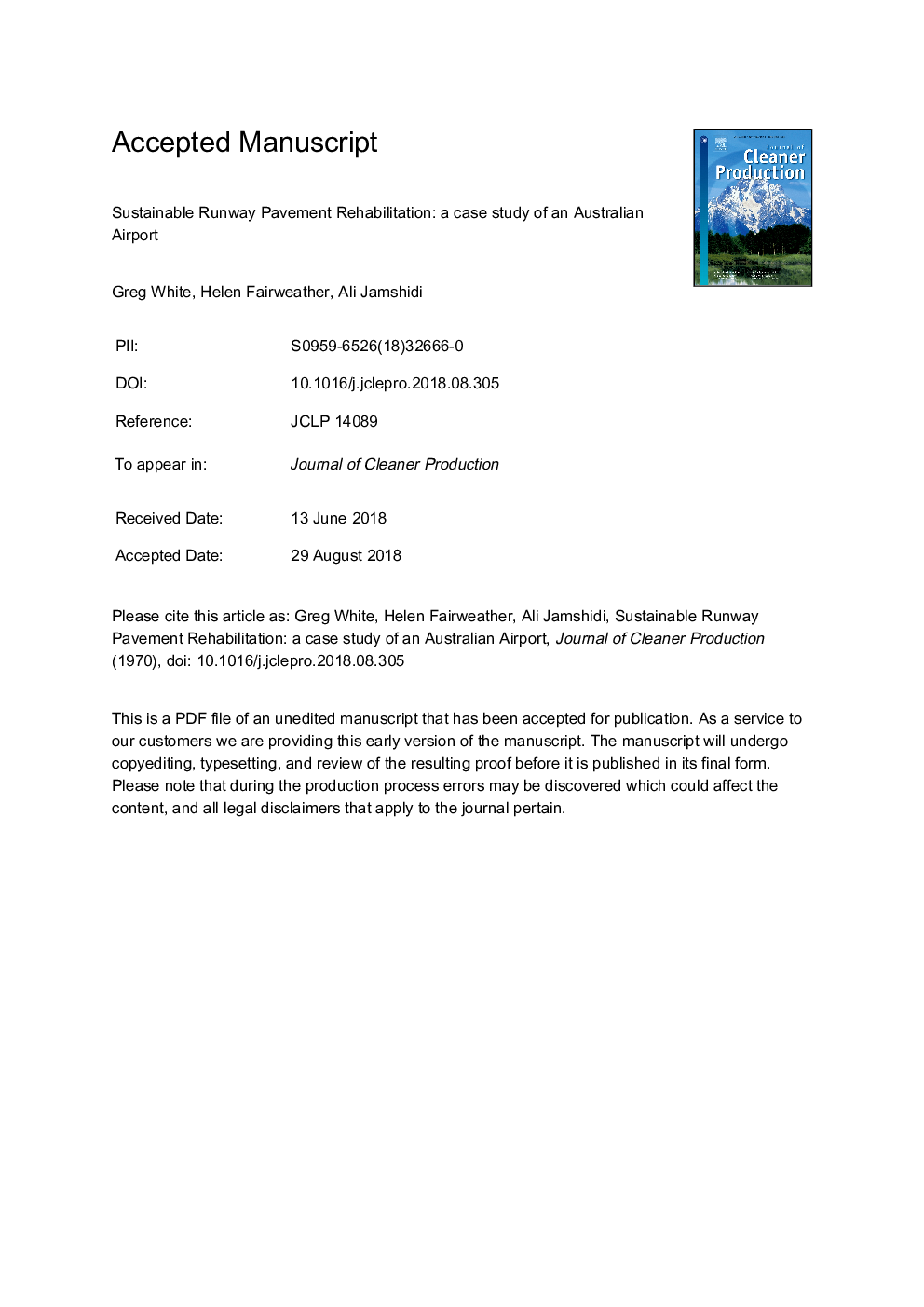| Article ID | Journal | Published Year | Pages | File Type |
|---|---|---|---|---|
| 10149197 | Journal of Cleaner Production | 2018 | 17 Pages |
Abstract
A regional Australian airport pavement was upgraded to increase the runway strength and improve the moisture resistance of the granular base course. Three designs were considered, including a traditional granular reconstruction with a new asphalt surface, a conservative re-use by bitumen stabilisation of the granular base course and a similar full re-use and recycling approach, including incorporation of the existing asphalt surface into the bitumen stabilised base course and reincorporation of recycled asphalt into the asphalt surface layer. A triple bottom line cost was estimated for each design option by normalising and combining the social cost (new materials consumed and waste material to landfill), financial cost (material supply and construction) and environmental cost (greenhouse gas omissions). The full re-use and recycling design provided a modest financial cost saving, at 78% of the cost of the traditional design. However, the full re-use and recycling design was found to have a social cost of just 12% of that for the traditional design, and 33% of the cost with regard the environmental. Overall, the triple bottom line for the full re-use and recycling approach was just 14% of that associated with the traditional approach, with even the conservative re-use approach costing only 25% of the traditional design. It is recommended that other airports consider re-use and recycling as part of the pavement upgrade works, with the triple bottom line approach used to objectively compare different design options.
Related Topics
Physical Sciences and Engineering
Energy
Renewable Energy, Sustainability and the Environment
Authors
Greg White, Helen Fairweather, Ali Jamshidi,
